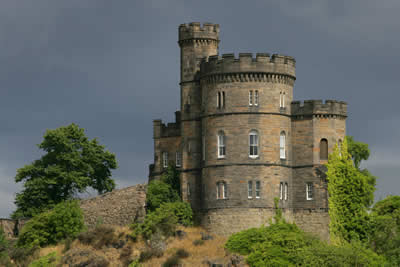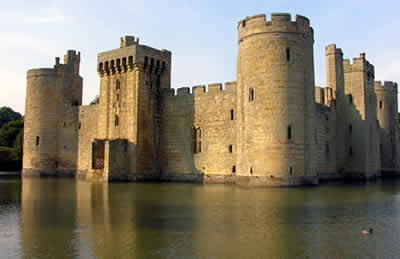Click to see a few of Britain’s medieval-era castles open to visitors.
The links in the captions will tell you more about each magnificent fortress.
(Images used by permission of copyright holders.)
[scrollGallery id=1]
“It’s a fortress,” said Everett. “Not a fairy tale.”
—The Key & the Flame

When Holly finds herself in the world of Anglielle, some things are very different … and some are quite familiar. Yawning above the fictional village of Hawkesbury in England are the ruins of a long-forgotten castle, but in Anglielle, the castle is new, strong, and ruled by a ruthless king.
Hundreds of castles like these were built in Britain between 1066 and around 1400 AD. Today, dozens of them still remain and are open to visitors. Although scattered throughout Britain, the greatest numbers are found along the borders and coasts of South and North Wales and in southern Scotland. These territories were the sites of many fierce battles throughout the Middle Ages.

In The Key & the Flame, King Reynard lives in a castle similar to an English castle from the early 1300s. The rooms tend to be cool, even cold, and thus are hung with tapestries both for decoration and for warmth. As a prosperous ruler, he has many servants and a large supply of livestock. The vast Northern Wood is his for hunting. While serfs (peasants) might be allowed to hunt small game here, large game like stag or boar is reserved for the lord of the castle. Poaching—which is hunting where you aren’t allowed—was considered a serious crime. The idea that Ben and Everett could be sentenced to lose a hand or even their lives is not unreasonable. These were typical punishments that the lord of the castle, especially if he were a king or baron, could dole out as he saw fit.
In times of peace and plenty, feasting and tournaments were a nobleman’s entertainment. To keep knights in shape and competitive, tournaments were held to test their skills. Real tournaments were very similar to the one you can read about in The Key & the Flame. Read more about real knights and jousting on this page.
The Time Traveler’s Guide to Medieval England: A Handbook to Visitors to the Fourteenth Century
by Ian Mortimer (Touchstone, 2011)
Castle (DK Eyewitness Books) by Christopher Gravett (DK Children, 2008)
photos: top, Edinburgh Castle, Scotland; bottom, Bodiam Castle, East Sussex, England; both © Can Stock Photos, used by permission. slide show: Cardiff, Skipton, Stirling: © Can Stock; Dunluce: © Eva Schuster/stock.xchng; Glamis: © Can Stock/Ruth Black; Malahide: © Mette Finderup/stock.xchng; Pembroke: © Christopher Mazzoli/stock.xchng; Warkworth: ©stock.xchng; Warwick: © Tim Rogers/stock.xchng; Windsor: © Filipe Samora/stock.xchng
text © 2020 by Claire M. Caterer











